Effect of the Crack Tip Bifurcation on the Plasticity-Induced Fatigue Propagation in Metallic Materials
Abstract
:1. Introduction
2. Numerical Procedure
3. Numerical Results
3.1. Straight Crack
3.2. Bifurcated Crack Tip
4. Discussion
4.1. Different Initial Projected Branch Length
4.2. Equal Initial Projected Branch Length
5. Conclusions
- (i)
- Cracks with bifurcated tip in a plate subjected to remote tensile loading exhibit plastic crack advance in mode I (they show a trend to growth in the direction of the original crack), with retardation in the fatigue crack growth when compared with a fully straight crack (with no branching).
- (ii)
- In the case of asymmetric bifurcation with different initial projected branch lengths, the crack propagation rate is greater at the crack tip corresponding to the long-branch and the retardation effect increases with the initial branch angle and the initial projected branch length of the short-branch and decreases with the SIF range.
- (iii)
- When the initial projected length of the two branches is the same (case symmetric and asymmetric bifurcation with different initial branch angle) the crack propagation rate is equal at the two crack tip. For these cases, the retardation effect increases with the initial distance between the ends of the crack and decreases with the SIF range.
Author Contributions
Funding
Institutional Review Board Statement
Informed Consent Statement
Data Availability Statement
Conflicts of Interest
References
- Suresh, S. Micromechanisms of fatigue crack growth retardation following overloads. Eng. Fract. Mech. 1983, 18, 577–593. [Google Scholar] [CrossRef] [Green Version]
- Meggiolaro, M.A.; Miranda, A.C.O.; Castro, J.T.P.; Martha, L.F. Stress intensity factor equations for branched crack growth. Eng. Fract. Mech. 2005, 72, 2647–2671. [Google Scholar] [CrossRef]
- Bui, T.P.; Miyashita, Y.; Morikage, Y.; Tagawa, T.; Handa, T.; Mutoh, Y.; Otsuka, Y. Contributions of grain size and crystal orientation to fatigue crack deflection and branching behavior in low carbon steel plates. ISIJ Int. 2020, 311, 1–10. [Google Scholar] [CrossRef]
- Toribio, J.; González, B.; Matos, J.-C. Analysis of fatigue crack paths in cold drawn pearlitic steel. Materials 2015, 8, 7439–7446. [Google Scholar] [CrossRef] [PubMed] [Green Version]
- Toribio, J.; González, B.; Matos, J.-C. Initiation and propagation of fatigue cracks in cold-drawn pearlitic steel wires. Theor. Appl. Fract. Mech. 2017, 92, 410–419. [Google Scholar] [CrossRef]
- Pärletun, L.G. Determination of the growth of branched cracks by numerical methods. Eng. Fract. Mech. 1979, 11, 343–358. [Google Scholar] [CrossRef]
- Meggiolaro, M.A.; Miranda, A.C.O.; Castro, J.T.P.; Martha, L.F. Crack retardation equations for the propagation of branched fatigue cracks. Int. J. Fatigue 2005, 27, 1398–1407. [Google Scholar] [CrossRef]
- Kitagawa, H.; Yuuki, R.; Ohira, T. Crack-morphological aspects in fracture mechanics. Eng. Fract. Mech. 1975, 7, 515–529. [Google Scholar] [CrossRef]
- Kitagawa, H.; Yuuki, R. Analysis of branched cracks under biaxial stresses. In Advances in Research on the Strength and Fracture of Materials; Taplin, D.M.R., Ed.; Pergamon Press: Willowdale, ON, Canada, 1978; pp. 201–211. [Google Scholar]
- Toribio, J.; Kharin, V. Simulations of fatigue crack growth by blunting-re-sharpening: Plasticity induced crack closure vs. alternative controlling variables. Int. J. Fatigue 2013, 50, 72–82. [Google Scholar] [CrossRef]
- Toribio, J.; Kharin, V. Finite-deformation analysis of the crack-tip fields under cyclic loading. Int. J. Solids Struct. 2009, 46, 1937–1952. [Google Scholar] [CrossRef] [Green Version]
- Toribio, J.; Kharin, V. Large crack tip deformations and plastic crack advance during fatigue. Mater. Lett. 2007, 61, 964–967. [Google Scholar] [CrossRef]
- McClung, R.C.; Thacker, B.H.; Roy, S. Finite element visualization of fatigue crack closure in plane stress and plane strain. Int. J. Fract. 1991, 50, 27–49. [Google Scholar]
- Tvergaard, V. On fatigue crack growth in ductile materials by crack-tip blunting. J. Mech. Phys. Solids 2004, 52, 2149–2166. [Google Scholar] [CrossRef]
- Toribio, J.; Kharin, V.; Ayaso, F.J.; González, B.; Matos, J.C.; Vergara, D.; Lorenzo, M. Numerical and experimental analyses of the plasticity-induced fatigue crack growth in high-strength steels. Constr. Build. Mater. 2011, 25, 3935–3940. [Google Scholar] [CrossRef]
- Toribio, J.; Matos, J.C.; González, B. Numerical modeling of plasticity-induced fatigue crack growth retardation due to deflection in the near-tip area. Metals 2021, 11, 541. [Google Scholar] [CrossRef]
- Proudhon, H.; Li, J.; Wang, F.; Roos, A.; Chiaruttini, V.; Forest, S. 3D simulation of short fatigue crack propagation by finite element crystal plasticity and remeshing. Int. J. Fatigue 2016, 82, 238–246. [Google Scholar] [CrossRef]
- Sadananda, K.; Babu, M.N.; Vasudevan, A.K. The unified approach to subcritical crack growth and fracture. Eng. Fract. Mech. 2019, 212, 238–257. [Google Scholar] [CrossRef]
- Borges, M.F.; Neto, D.M.; Antunes, F.V. Revisiting classical issues of fatigue crack growth using a non-linear approach. Materials 2020, 13, 5544. [Google Scholar] [CrossRef] [PubMed]
- Ortiz González, J.A.; de Castro, J.T.P.; Meggiolaro, M.A.; Gómez Gonzáles, G.L.; de França Freire, J.L. Challenging the “ΔKeff is the driving force for fatigue crack growth” hypothesis. Int. J. Fatigue 2020, 136, 105577. [Google Scholar] [CrossRef]
- Kujawski, D. Discussion and comments on KOP and ΔKeff. Materials 2020, 13, 4959. [Google Scholar] [CrossRef] [PubMed]
- Suresh, S. Fatigue of Materials, 2nd ed.; Cambridge University Press: Cambridge, UK, 1994. [Google Scholar]
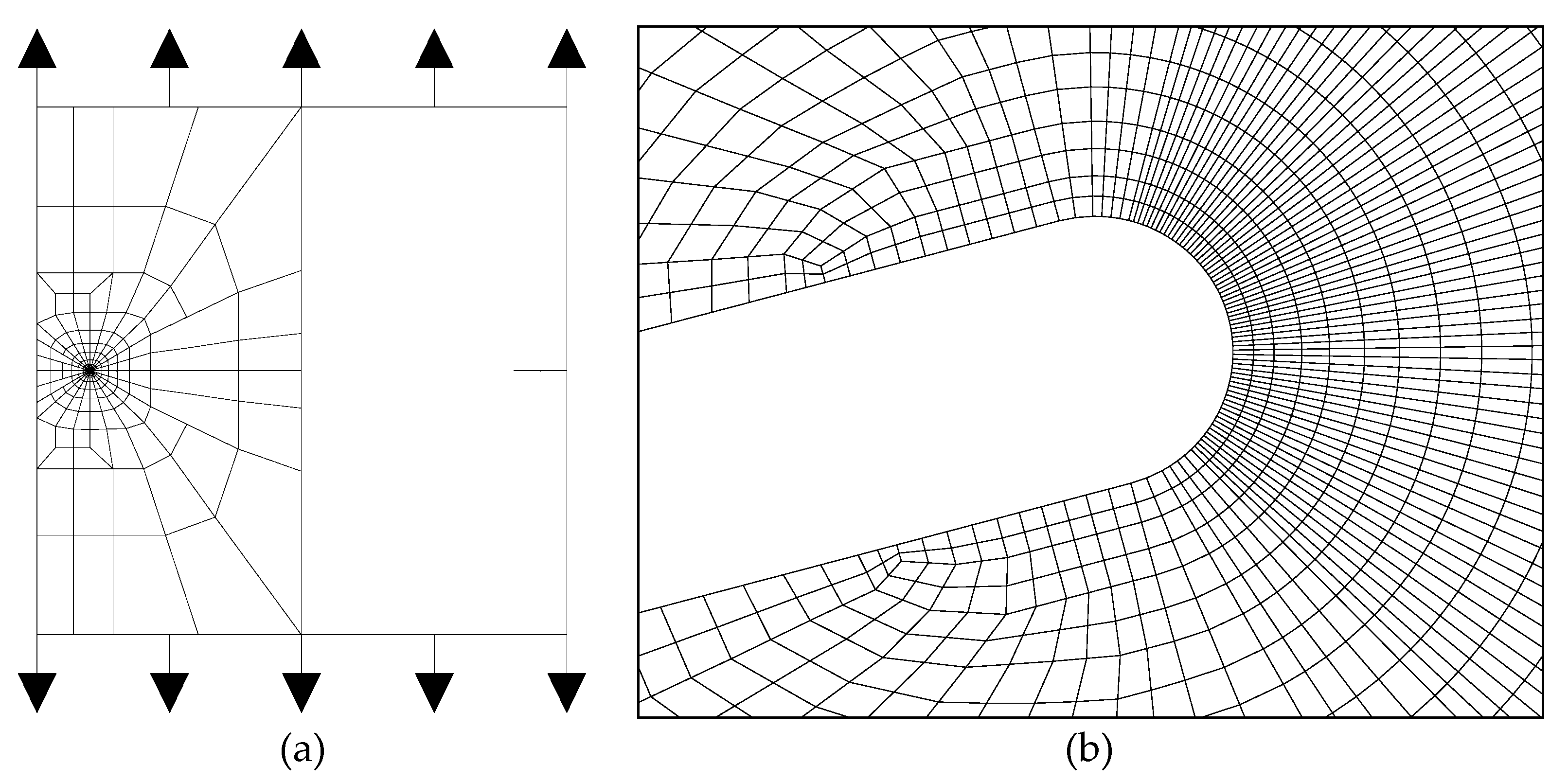
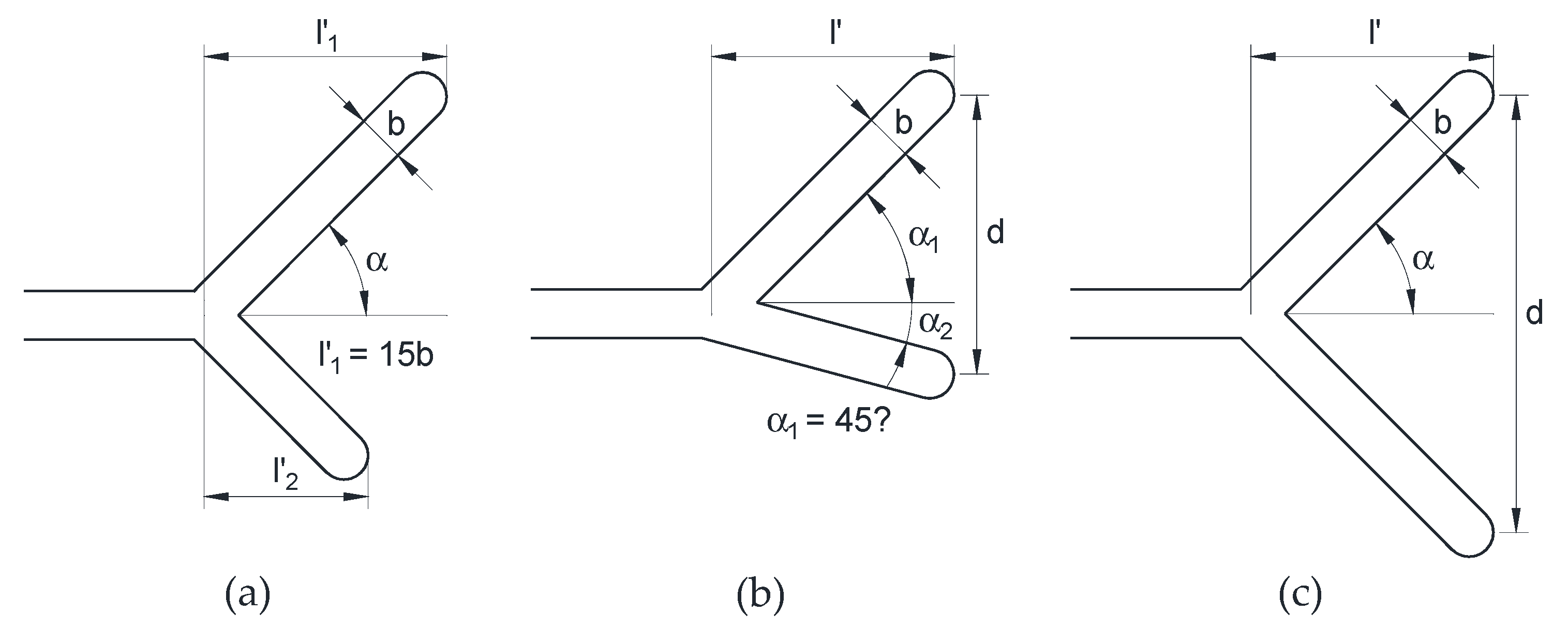
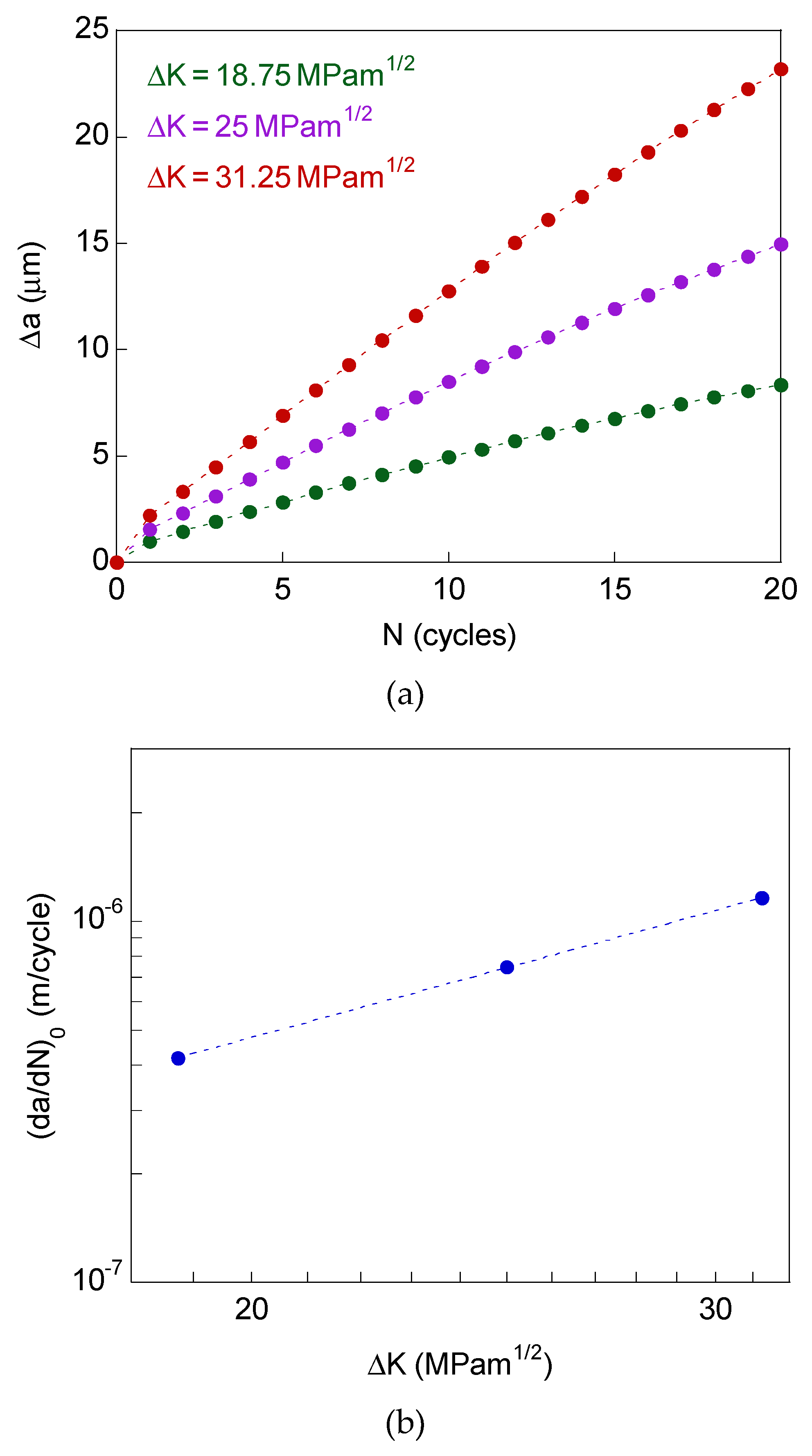
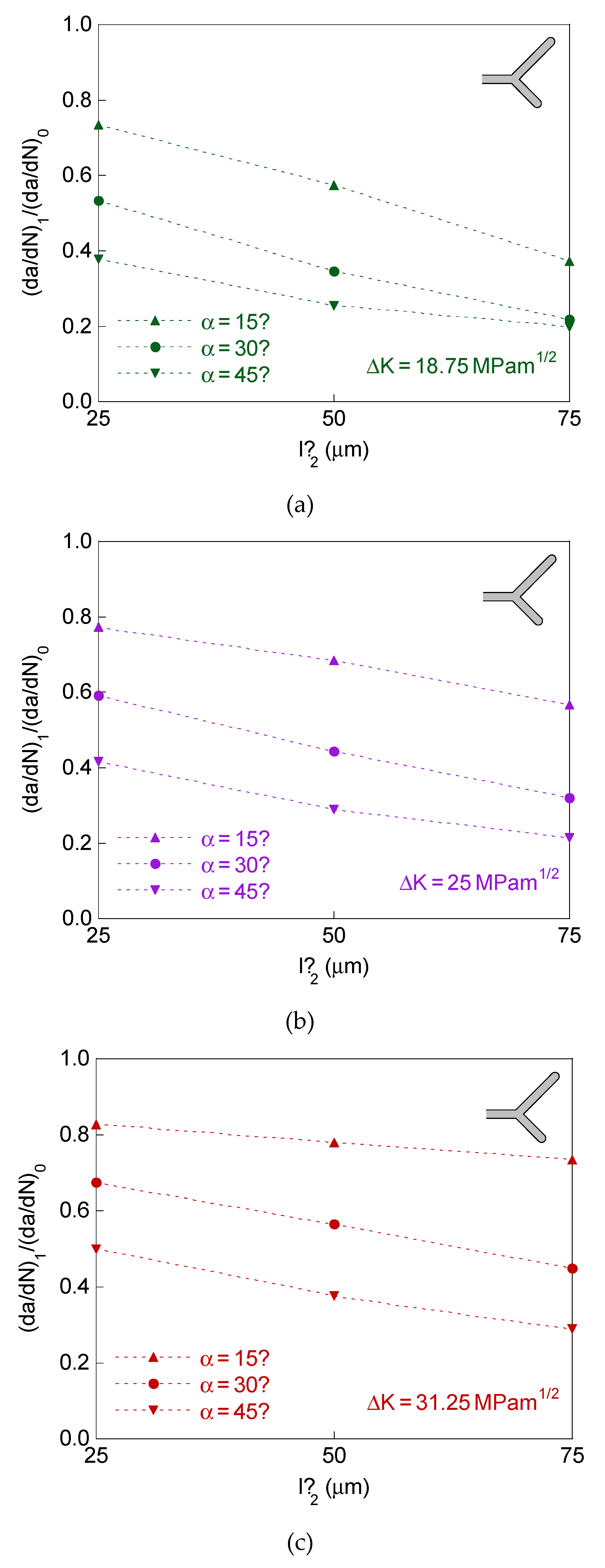
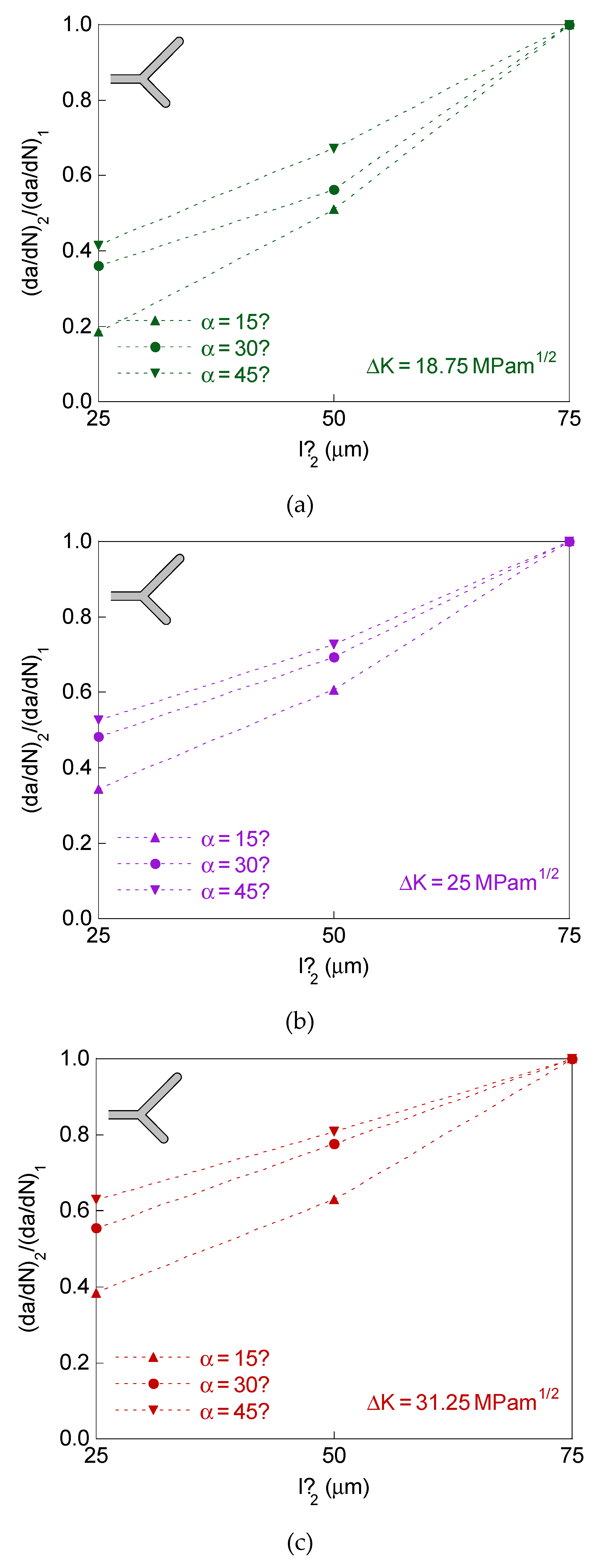


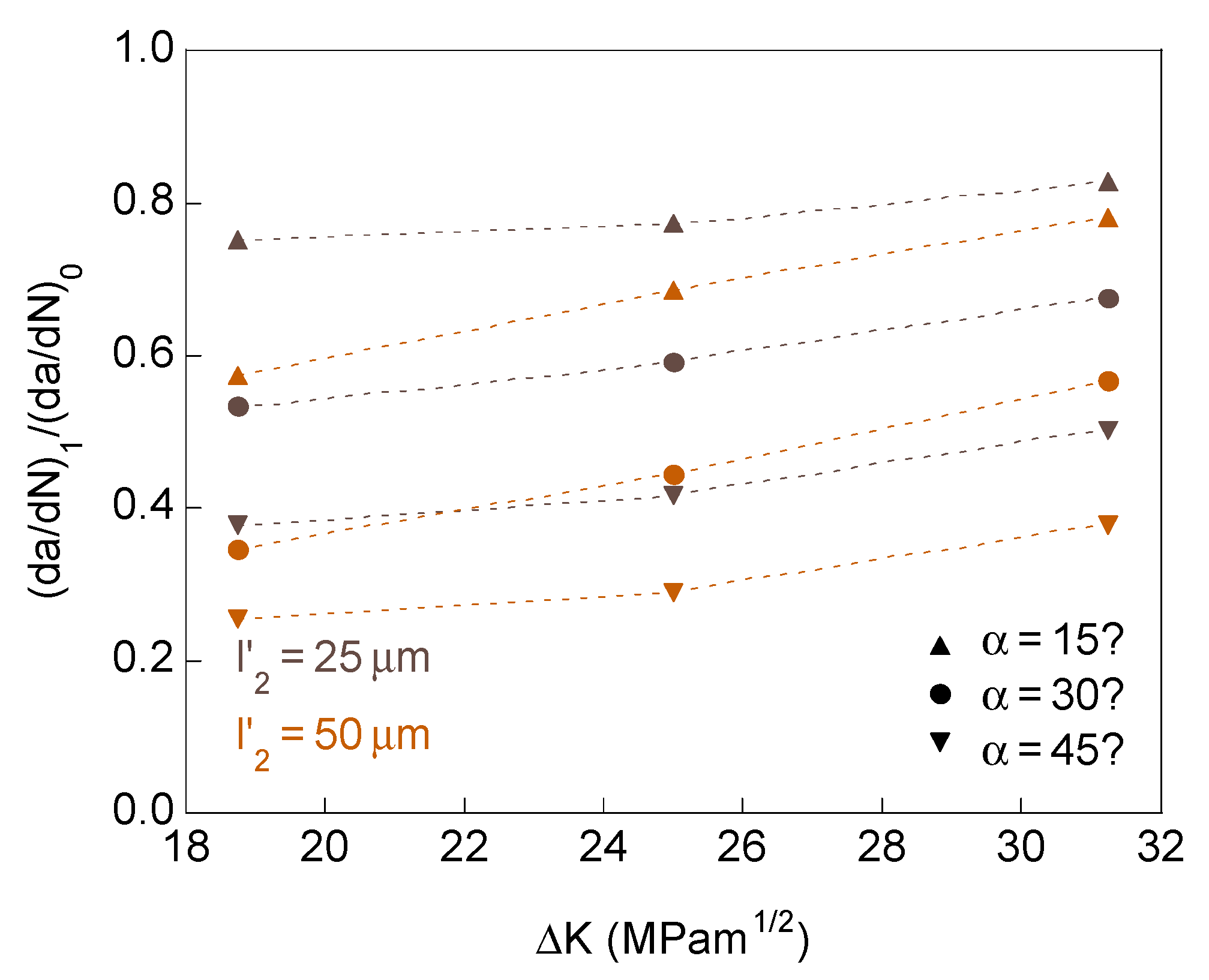

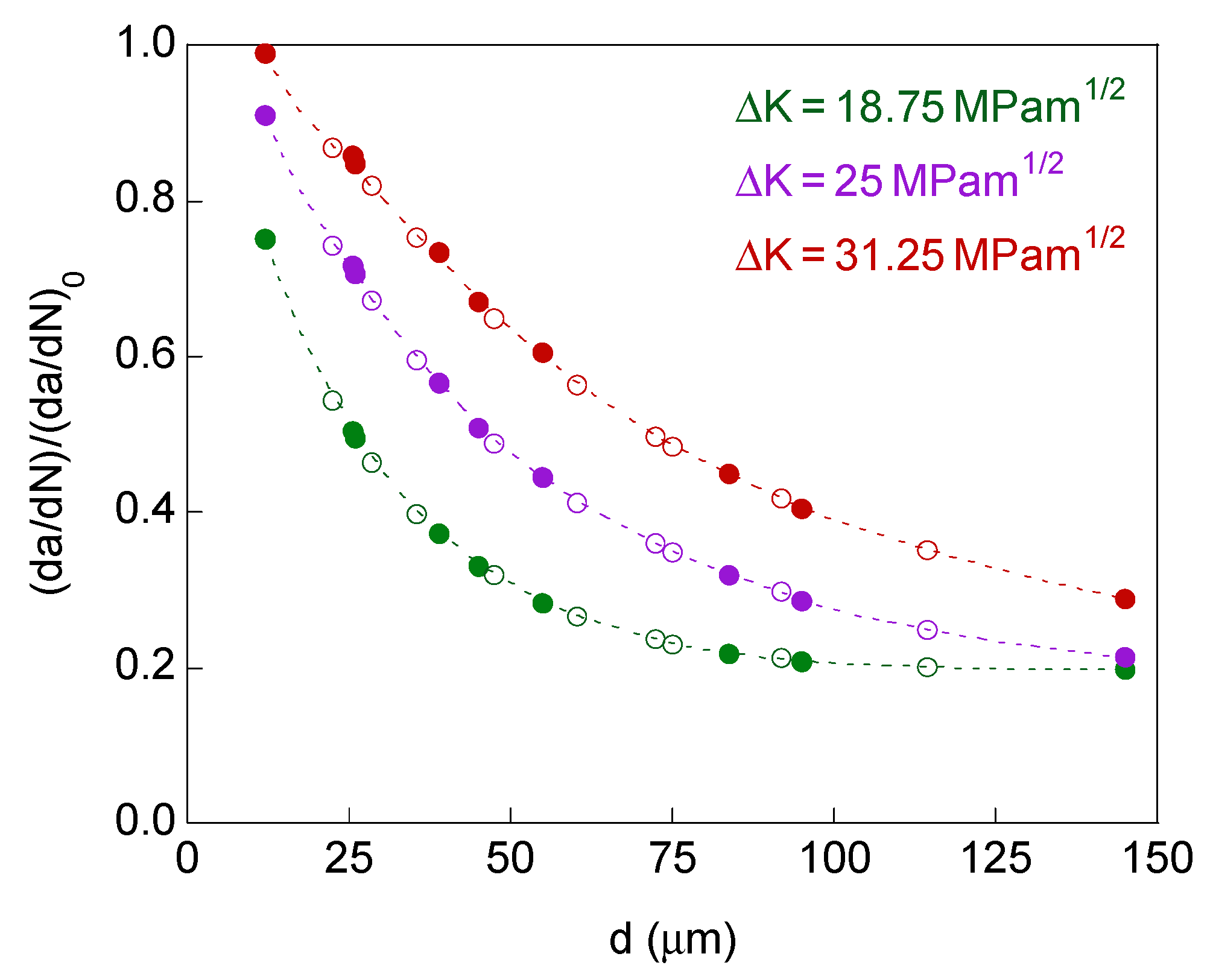


| Configuration | Branch Projected Length | Branch Angle | |
|---|---|---|---|
| Different projected length and equal angle in the two branches |  | l’1 = 75 μm l’2 = 25 and 50 μm | α = 15, 30 and 45° |
| Equal projected length and different angle in the two branches |  | l’ = 25, 50 and 75 μm | α1 = 45° α2 = 0, 15 and 30° |
| Symmetric case, equal projected length and angle in the two branches |  | l’ = 25, 50 and 75 μm | α = 15, 30 and 45° |
Publisher’s Note: MDPI stays neutral with regard to jurisdictional claims in published maps and institutional affiliations. |
© 2021 by the authors. Licensee MDPI, Basel, Switzerland. This article is an open access article distributed under the terms and conditions of the Creative Commons Attribution (CC BY) license (https://creativecommons.org/licenses/by/4.0/).
Share and Cite
Toribio, J.; González, B.; Matos, J.-C. Effect of the Crack Tip Bifurcation on the Plasticity-Induced Fatigue Propagation in Metallic Materials. Materials 2021, 14, 3385. https://doi.org/10.3390/ma14123385
Toribio J, González B, Matos J-C. Effect of the Crack Tip Bifurcation on the Plasticity-Induced Fatigue Propagation in Metallic Materials. Materials. 2021; 14(12):3385. https://doi.org/10.3390/ma14123385
Chicago/Turabian StyleToribio, Jesús, Beatriz González, and Juan-Carlos Matos. 2021. "Effect of the Crack Tip Bifurcation on the Plasticity-Induced Fatigue Propagation in Metallic Materials" Materials 14, no. 12: 3385. https://doi.org/10.3390/ma14123385







